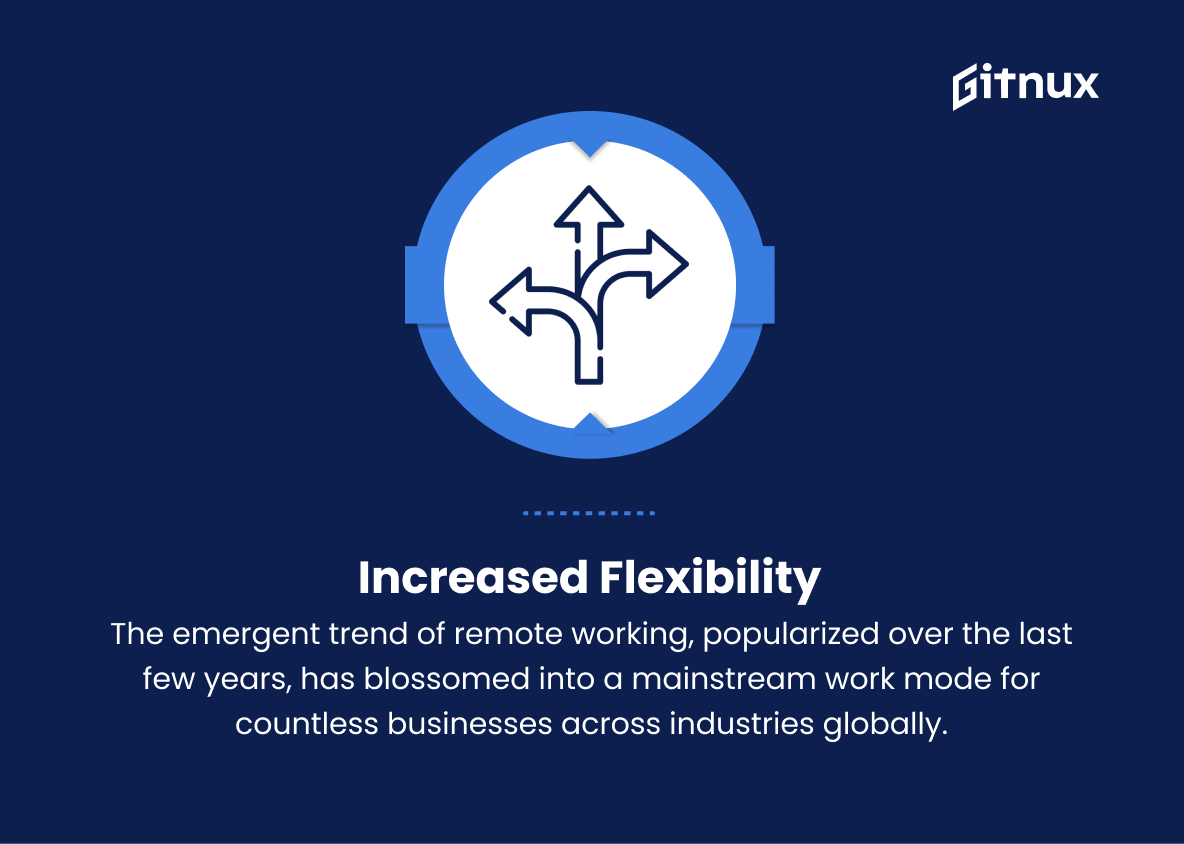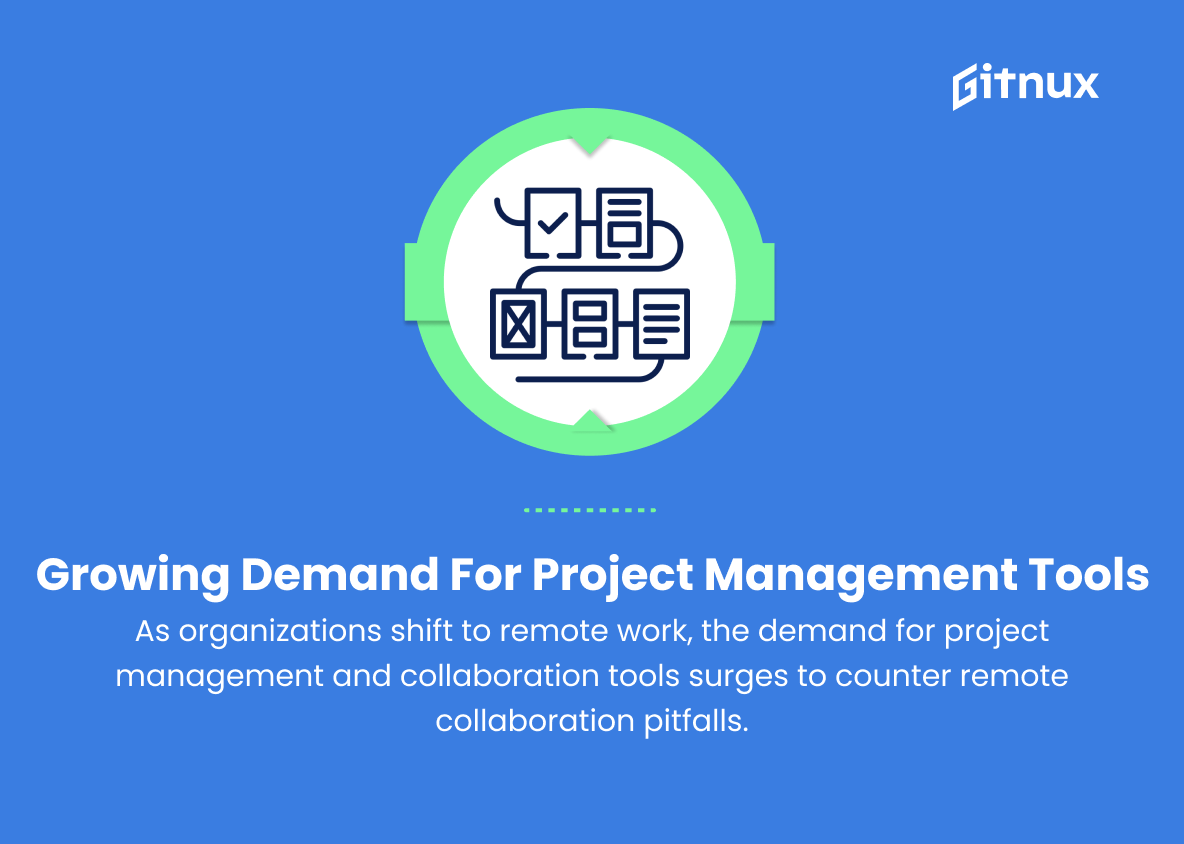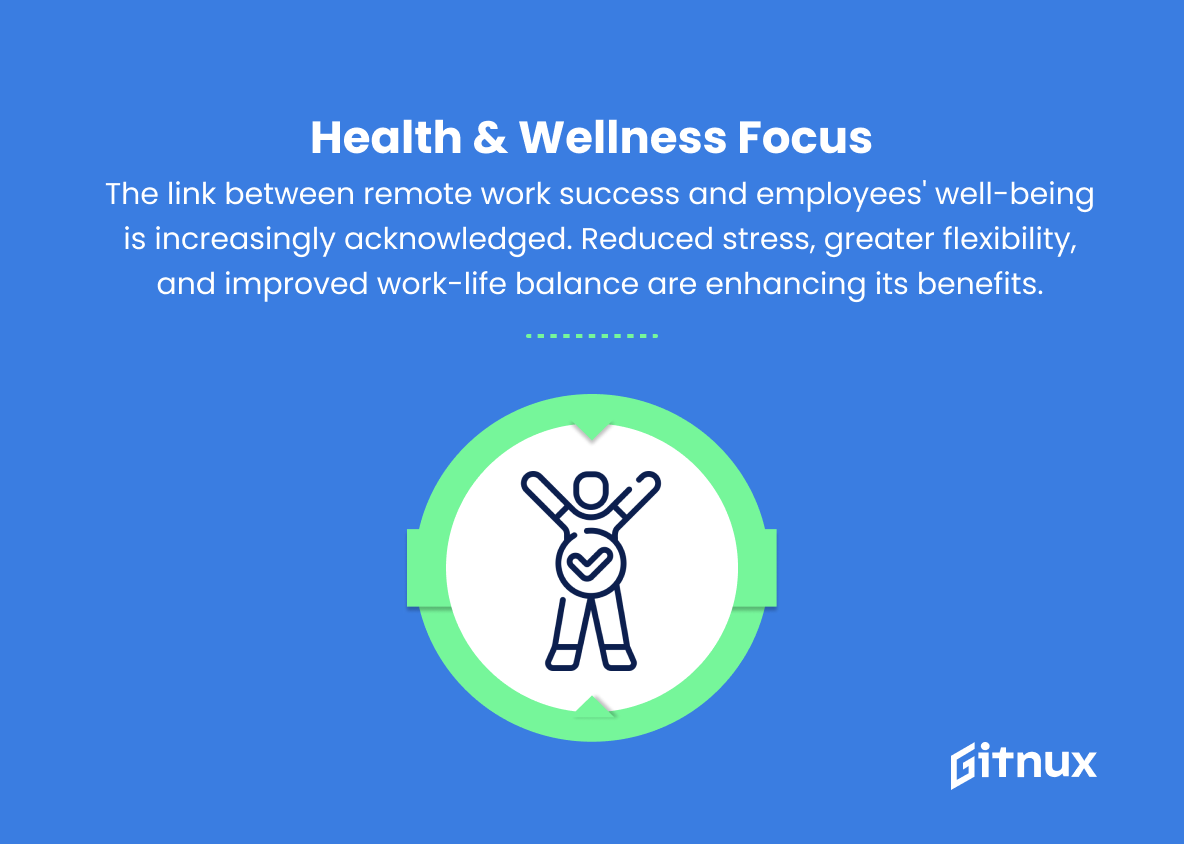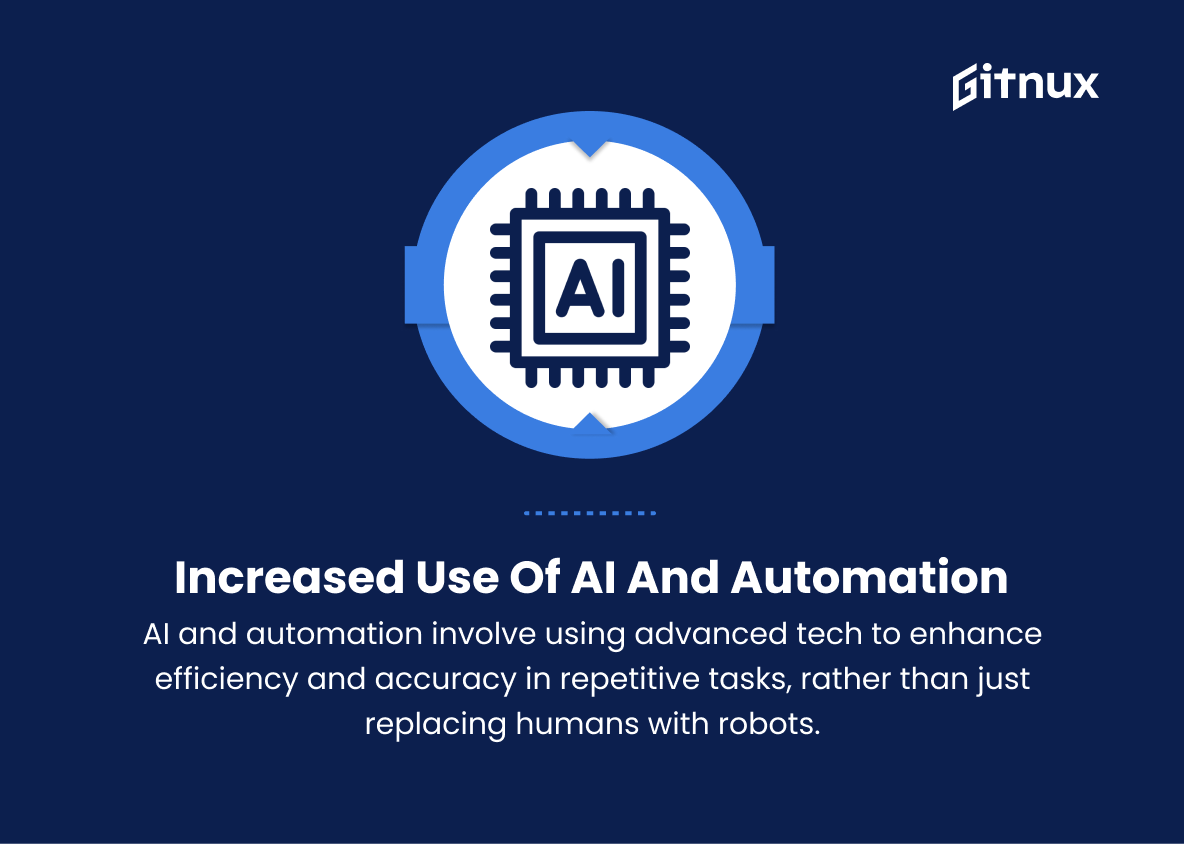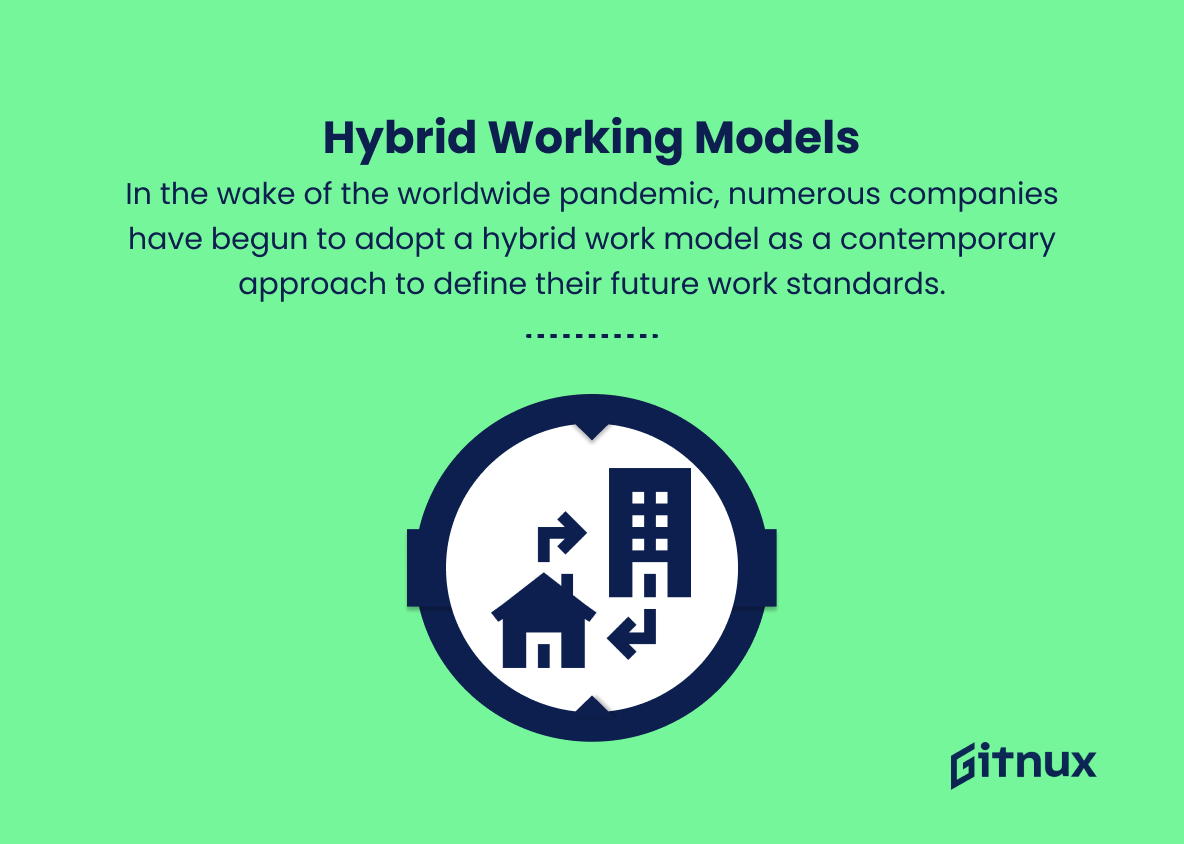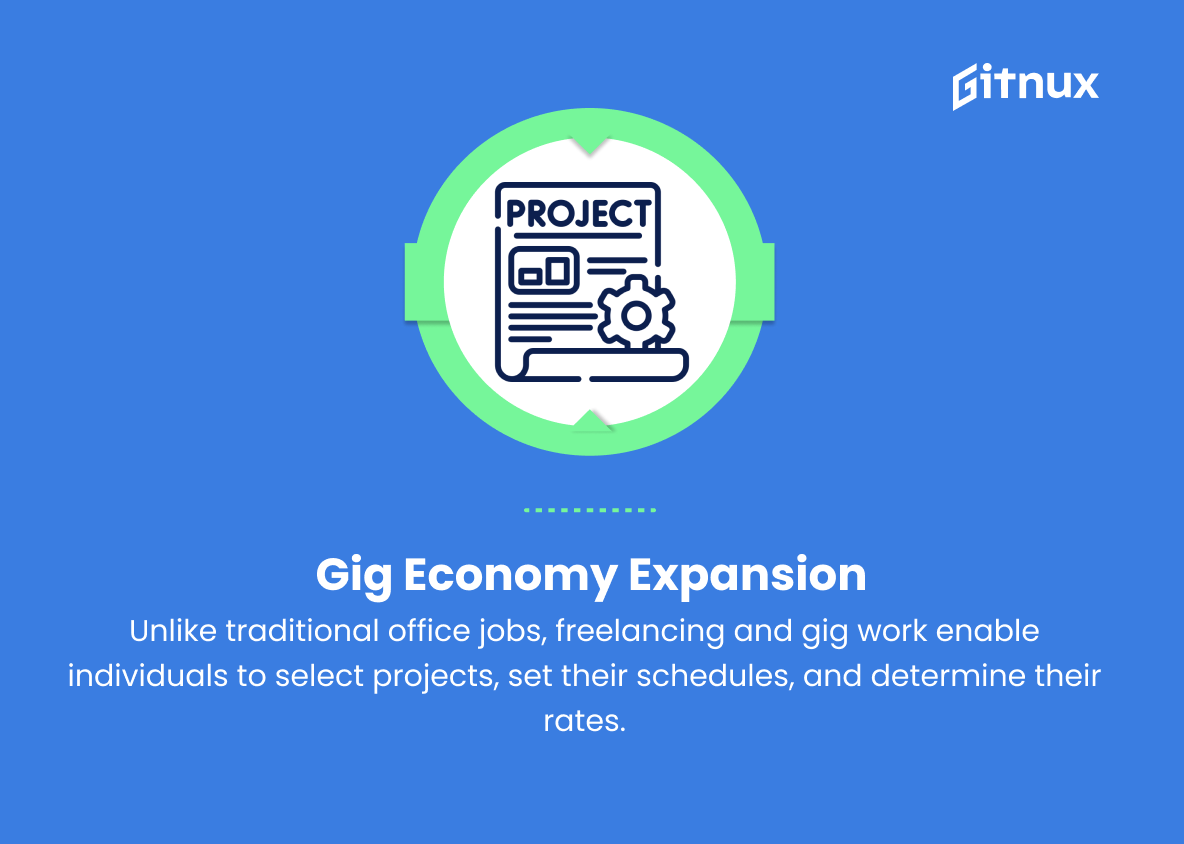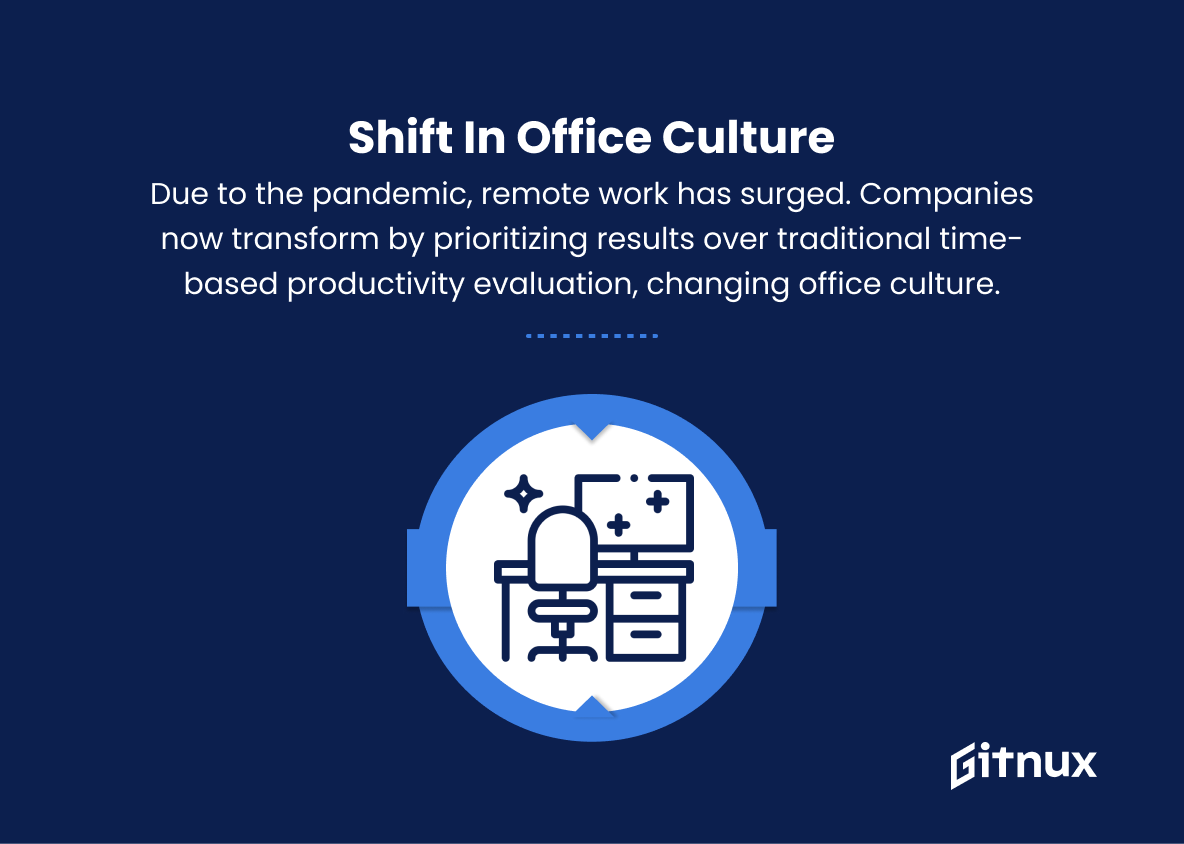The transition to remote work is not new, but the COVID-19 pandemic has accelerated this shift in an unprecedented way, pushing organizations from all over the globe to rethink their traditional work setups. As we continuously navigate the dynamic digital age, new remote work trends are emerging, redefines the future of work.
This blog post shines a light on the Top 10 Remote Work Trends shaping the future, from changing office dynamics to advancements in technology, and how businesses can adapt to successfully ride this wave of transformation. Whether you’re a business leader, an employee, or simply interested in the future of work, you’ll find plenty to ponder with these cutting-edge trends.
Top 10 Remote Work Trends Shaping the Future
1. Increased Flexibility
The emergent trend of remote working, popularized over the last few years, has blossomed into a mainstream work mode for countless businesses across industries globally. Pioneering a dramatic shift in the traditional work culture, remote work has emerged as a solution to the rigid nine-to-five grind, offering employees an advantageous level of flexibility. This flexibility allows individuals to tailor their work schedules around their unique life responsibilities and personal commitments, maximizing their efficiency by working during their most productive hours.
The direct outcome of this newfound flexibility is a marked increase in productivity. No longer bound by the limitations of formal office hours or a standard office environment, workers are demonstrating higher levels of efficiency, coupled with enhanced quality of work. They are now able to focus on tasks without the constant interruptions of an office, and manage their time effectively around familial duties, personal hobbies, and well-being practices, which conventional office-based roles make difficult. This autonomy over their work-life has indeed fostered a profound sense of motivation and commitment among employees, further adding to the overall productivity.
In addition to fostering productivity, remote work has been instrumental in establishing a healthier work-life balance for employees. Understanding the importance of preserving and nurturing personal time, workers can now enjoy increased periods of rest, recreation, and well-being. In essence, they no longer need to sacrifice their personal life at the altar of professional commitments.
Moreover, reduced commuting times equate to fewer hours wasted and less stress associated with traffic or public transport congestion. With the extra time saved, many employees report feeling more relaxed, better able to attend to personal matters, or use it to enrich their professional skills.
All these factors combine to create a more balanced lifestyle, where work and personal life coexist harmoniously, and productivity is not achieved at the expense of well-being. As remote work continues to revolutionize the work culture, it delivers on the promise of a holistic, fulfilling work experience, in which employees can truly thrive.
2. Rise of Digital Nomads
Owing to the rapid acceleration and integration of technology into everyday lives, and an embracing shift towards more flexible working models, we are witnessing a significant rise in a particular breed of professionals – the digital nomads. These individuals are effectively harnessing the power of the digital age to work remotely and concurrently satisfy their wanderlust, essentially working whilst journeying across the globe.
The advent of technology has profoundly disrupted the conventional desk-bound work structure, putting powerful tools and resources literally at our fingertips. High-speed internet connections, cloud computing, project management software, and collaborative tools have created a seamless work environment that is not bound by geographical constraints. This coupled with lightweight, affordable and highly portable devices like laptops, tablets, and smartphones has made it easier for these digital nomads to access their work from anywhere in the world.
Additionally, progressive companies and organizations are beginning to recognize the value of a remote working model, aiming to leverage the diverse skills and perspectives of talent located across the globe. As these businesses break away from the traditional 9-5 office structure, they are offering more flexibility in terms of work location and hours. This flexibility propels the digital nomad lifestyle and broadens the scope for travel while maintaining a steady income.
Aided by digital tools and an increasingly supportive working culture, these digital nomads are changing the narratives by demonstrating that productivity isn’t confined to an office space. They are able to focus on their professionally meaningful work while exploring various cultures, landscapes, and lifestyles, thereby striking a unique balance between work and life.
As technology continues to evolve and remote work models become more acceptable, we can expect this trend of digital nomadism to sink in deeper into our professional world, challenging and changing the way we perceive ‘work’. As the world gets smaller and more connected, we will indeed see an increasing number of professionals choosing the footloose and fancy-free lifestyle of a digital nomad.
3. Growing Demand for Project Management Tools
Effective collaboration in a remote work setup is incumbent upon the use and functionality of modern technological tools. There is an intricate dance between the human elements and the digital resources we utilize daily. As more organizations transition to remote work setups, there’s a subsequent surge in the demand for project management and team collaboration tools to mitigate the potential pitfalls that come with remote collaboration.
In the wake of the remote work revolution, the art of keeping teams in sync, irrespective of where they are located geographically, requires concerted efforts. This shift is converging on cloud-based project management and team collaboration tools to maintain seamless communication, agility and project coherence. Teams are integrating these tools into their day-to-day operations as they provide comprehensible timelines and synchronizing them with shared calendars.
Moreover, these tools enable real-time messaging and video conferencing, document sharing and editing, task tracking, improved workflow automation, and centralized data storage. As such, they are providing a digital infrastructure that enhances efficiency, quality of work, and productivity levels. They help to bridge the geographical distance amongst team members while maintaining an efficient team dynamic, both essential elements in fostering a successful remote work environment.
Furthermore, as the world continues to grapple with the ongoing pandemic and its aftermath, businesses and organizations are being compelled to rethink their operational structures. In response to this, they’ve turned to digital platforms for survivorship, placing an even heavier emphasis on the significance of team collaboration tools. This necessity has weaved a lucrative path for teleservices and cloud-computing providers.
4. Co-Working Spaces Surge
In response to the increasing sense of solitude and risks of repetitive monotony often associated with working from home, a significant number of remote workers are opting for shared co-working spaces. This rising trend indicates an increase in their popularity and a shift in work patterns, particularly in the global context of a significant rise in remote work set-ups as a consequence of the recent pandemic conditions.
Shared co-working spaces provide a unique solution to the most common problems associated with home-based employment— such as lack of social interaction, insufficient space, and the struggle to maintain a work-life balance. These spaces offer a structured office-like environment while preserving the flexibility of remote work. Remote workers often consider them a refuge from the distractions typical in a home setting such as household chores or family demands.
Driven by a desire for social connection and professional cross-pollination, remote workers are leveraging these co-working spaces to network with others, triggering an unexpected surge in their popularity. Such venues provide an opportunity to interact, collaborate, exchange ideas and foster a sense of belonging.
This rising interest in co-working spaces signals a paradigm shift in work culture. It has led to a growing demand for innovation in their design, altering the landscape of commercial real estate. Numerous co-working locations are now investing in more personalized spaces, focusing on comfort, aesthetics, and functionality, which further adds to their increasing appeal.
5. Blurring of International Boundaries
Remote work is revolutionizing the modern workplace by breaking down geographical barriers that previously limited business operations. This shift in work environment allows companies to source talent globally, without imposing the traditional need for relocation for potential employees.
In the earlier scenario, hiring was often restricted to specific geographical locations near the company’s physical offices. The talent pool was primarily made up of candidates who lived within commuting distance or who were willing and able to relocate for work. However, with the emergence and growing popularity of remote work, companies can broaden their horizons and hire individuals irrespective of their geographical locations.
The scene now is such that an organization headquartered in France can have a team member from Australia, communicating and collaborating seamlessly through the latest technology. This ability to tap into the global talent market has, therefore, thrown open the doors to an immensely larger, more diverse, and more qualified group of applicants.
Moreover, this development reduces the overall costs and complications of employee relocation. Companies no longer have to subsidize moving expenses or struggle with the bureaucratic and logistical issues of an international transfer. Employees are saved from the personal upheaval and readjustment involved in relocating.
Remote work is not only proving advantageous for businesses, but it is also creating opportunities for prospective employees across the globe. Talented individuals who may have been previously overlooked due to their geographical location are now finding their skills in demand. Barriers are breaking down, leading to a more inclusive, diverse, and dynamic workforce on a global scale.
6. Health & Wellness Focus
In the current era of increased focus on health and wellbeing, the advantageous prospects of remote work are making headlines. There is growing recognition and palpable awareness that remote work success is closely tied to employees’ physical and mental health. As such, reduced stress levels, increased flexibility, and improved work-life balance are making remote work a notably beneficial path. Corporations around the world are acutely attuned to these shifting dynamics.
These astute business entities are investing heavily in wellness programs and employee support mechanisms to foster a healthier and happier workforce. By sponsoring fitness initiatives, mindfulness workshops, and therapy sessions, corporations are ensuring that their employees are protected from the potential pitfalls of working in isolation.
Moreover, organizations are acknowledging the significance of robust mental health support systems. They are initiating flexible working schemes, providing access to mental health counselors, and organizing regular check-ins to identify and address potential issues at the earliest stage.
There is a growing emphasis on harnessing the potential of cutting-edge technology to facilitate these wellness programs too. Digital fitness platforms, teletherapy options, wearable health tech devices, and AI-driven stress management tools are reshaping the employee wellness landscape.
Furthermore, corporations are recognizing the importance of training managers to better understand and manage remote teams. Manager training programs are rising in prevalence, focusing on themes of empathy, emotional intelligence, and recognizing signs of burnout or mental distress among remote workers.
7. Increased Use of AI and Automation
AI and automation are not just about robots replacing humans in workplaces, but rather about applying sophisticated technologies to accomplish repetitive tasks more efficiently, and often, more accurately. These technologies are becoming increasingly important in our digital age, where they are facilitating innovative workflows and work cultures, such as remote work.
Across industries, mundane and routine tasks that once consumed many man-hours are now being managed effortlessly by AI-driven automation tools. These tasks range from data entry and analysis, schedule management, customer service, among others. By taking over these activities, AI and automation free up valuable time for remote workers — who do not need to be on-site in physical office spaces.
Consequently, remote employees now have more bandwidth to concentrate on more complicated and essential issues. With repetitive tasks off their hands, they can dedicate time and energy to decision-making, problem-solving, and creative thinking. AI is, in essence, empowering remote workers to make fuller use of their human attributes. It encourages them to bring their unique perspective, insightful judgement, inventive ideas, and empathetic understanding to the fore, elements that AI isn’t capable of replicating just yet.
Moreover, AI and automation create an environment where professionals working remotely can be more self-reliant. They provide real-time data analysis and predictions that enable employees to make quick and informed decisions independently. In turn, the organizations can reap the benefits of increased productivity, innovation, and employee satisfaction.
In the long run, this trend could lead to a significant shift in the way we work. It might redefine job roles, making them more complex and brain-centric, and less focused on manual, repetitive tasks. This invariably speaks to a future where AI and automation supplement human potential, enabling remote workers to elevate their performance in ways that were unimaginable in the pre-digital era.
8. Hybrid Working Models
In the wake of the worldwide pandemic, numerous companies have begun to adopt a hybrid work model as a contemporary approach to define their future work standards. This model serves as a balanced synergy between remote work and traditional office settings, offering employees the flexibility to operate from anywhere while still allocating a physical space to meet, collaborate and foster social interaction.
The hybrid work model prioritizes the concept of ‘job to be done’ rather than the antiquated notion of ‘place to work’. It is a model that contributes to a more balanced professional lifestyle by amalgamating the advantages of both remote and traditional office work. It caters to the different working styles and personal circumstances of employees, offering a choice on how, when, and where they want to work, thereby increasing their satisfaction and productivity.
Under the hybrid model, certain tasks can be accomplished remotely from the comfort of home or a nearby café, without the necessity of commuting daily. Employees can manage their tasks more independently, reducing distractions and offering time flexibility. On the other hand, companies still maintain a physical workspace available for staff who either choose to or need to work on-site, possibly due to the nature of their work or preference.
This office space serves crucial purposes beyond the tangible aspect. It provides opportunities for spontaneous collaboration, organic brainstorming, and serendipitous encounters that heavily contribute to innovation. It supports the human desire for social interaction, which is fundamental in building relationships, fostering a strong company culture, and promoting employee engagement and satisfaction.
9. Gig Economy Expansion
The gig economy, a significant trend that reflects a major shift in how people are choosing to work, is projected to witness significant growth as an increasing number of people gravitate towards freelance and contract work. This trend is fueled by the enhanced flexibility and independence that traditional 9-5 office jobs may fail to provide. The rejection of the conventional corporate ladder in favor of such non-traditional roles is becoming a widespread phenomenon.
As opposed to the regular office grind, freelancing and contractual work, known as ‘gigs’, allow people to pick and choose the projects they want to work on, set their schedules and even determine their rates. The promise of such freedom, understandably so, is enticing more candidates to step into this world of self-employment and has become the foundation for the gig economy.
On the wider economic spectrum, this gig-based work model presents immense potential. Freelancers, contractors, and those who take on gig work have been steadily reshaping the labor market. A more project-based work style saves organizations the cost of full-time salaries, benefits, and workspace expenditures. It allows companies to be more agile, scaling their workforce up or down based on demand and business requirements.
Despite these clear advantages, the gig economy is not without its challenges. Job security, lack of benefits, irregular income, and precarious working conditions are just a few of the drawbacks gig workers may face. However, as more companies incorporate flexible work policies and governments examine legislation to protect these workers, the gig economy’s future seems more promising.
10. Shift in Office Culture
With the surge in remote work adoption due to circumstances like the global pandemic, companies are finding themselves in the middle of a corporate transformation, pushing them to switch their office culture to a different model that prioritises results and efficiency over traditional time-based evaluation of productivity. Rather than concentrating on the hours spent on or behind a desk, these corporations are now emphasizing on the quality and degree of work produced.
In this new landscape, we can anticipate a significant culture shift that will fundamentally change how businesses operate. On this spectrum, we will see a trend of companies moving toward a more trust-based relationship with their employees. This shift highlights that the conventional work environment — where management’s watchful eyes are regularly on employees — is giving way to a space where trust and self-discipline are at the helm. This move not only empowers employees but also fosters a sense of responsibility and dedication towards their work.
Additionally, coupled with this transformation is the call for higher and more effective communication practices. As the sense of physicality diminishes in a remote setup, communication becomes the crux of seamless operation and successful collaboration. This focus on communication underscores the need for clear, concise, and transparent exchanges, rendering it pivotal in bridging geographical gaps and uniting teams across time zones.
Furthermore, this shift puts autonomy at the forefront of the work culture. Companies now offer their employees increased control over their schedules, enabling them to weave their work around their personal lives instead of the other way round — a trend that challenges the past notion of the rigid nine-to-five grind. This freedom to choose when and where to work not only boosts employee morale but also tends to reflect in increased productivity and happier, more balanced lives.
Lastly, honesty becomes more significant in this altered work condition — the sincerity to admit when one is overworked, the frankness to communicate any hindrances encountered, and the openness to share ideas and engage in constructive feedback. As the work environment grows ever so virtual and employees more autonomous, honesty now becomes central to maintaining transparency, acknowledging one’s limitations, and achieving collective growth.
Conclusion
In essence, the future of work is being vividly redrawn by remote work trends. Considering these top 10 trends, it’s clear that companies, employees, and freelancers alike will continue to benefit from the flexibility, efficiency, and comfort they bring. Boundaries are fading and the transcendent power of technology is enabling a worldwide talent pool, significantly diversifying the workforce.
While remote working is not without its challenges, the right infrastructure and a futuristic mindset are key to harnessing its full potential. The evolving dynamics demand continuous learning, adaptation, and effective use of technological tools. As we march towards a future where remote work becomes the norm rather than the exception, integrating these trends into our professional lives today can equip us for a brighter, more sustainable future of work.
